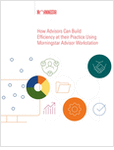As the sun shone on a crisp spring New England morning, over 23,000 runners stretched their legs, fraternized with their friends and competitors and mentally prepared themselves for the biggest sporting event in New England. The Boston Marathon is the oldest marathon in the country and one of the world’s six great marathons. It has been held on Patriots Day, the third Monday of April, and a civic holiday in Massachusetts since 1897. The city of Boston becomes a city of spectators on “Marathon Monday” as it is sometimes called, and when the early Red Sox game at Fenway Park lets out, an estimated 500,000 people swell the streets to cheer for the runners.
The prestige of being one of those runners that the crowd has flocked to support coupled with the lauded history of the event makes the marathon an ambitious goal. Take into account the arduous times one needs to run to qualify and there emerges the perfect civic sporting event; a celebration of a city and a race that is watched by the world. That is why it was so devastating when two bombs went off at the finish line, killing three and injuring 264 people at the time of this writing.

For Jeff Breese, a Chartered Retirement Planning Counselor at Flores Wealth Management and Raymond James in Chandler, Ariz., this year’s marathon was a culmination of many things and a homecoming of sorts. Breese grew up in Attleboro, Mass., about 40 miles south of Boston. He attended Boston University, graduating in 1999. During his senior year of college, Breese ran the race as a “bandit,” someone who jumps in without a number at the beginning of the race. He did not finish, coming up short after reaching “Heartbreak Hill” because he “did not take the race seriously enough or prepare properly.” This year was to be his redemption race and he trained to complete it.
But it was not just proving to himself that he could finish what he started back in college; Breese was running with another purpose. He had recently lost a classmate from Boston University to cancer at the young age of 35. He, along with three classmates decided to put together a team and see if they could secure a spot on the Elite Athlete Team sponsored by John Hancock. Hancock, the U.S. unit of Toronto-based Manulife Financial is not just Breese’s former employer (where he worked for four-and-a-half years until leaving in 2009), but is also a mainstay corporate sponsor, in its 28 year of landmark sponsorship for the marathon. Immediately after the bombing, John Hancock donated one million dollars to the onefundboston.org, a charity set-up by Governor Deval Patrick and Boston Mayor Thomas Menino.
The system to make the Elite Athlete Team is based on a lottery. Being part of team means that you don’t have to qualify, which Breese was happy about because although he stays in good shape, he was not sure if he could make time. Breese and his teammates were not picked in the first lottery system but he got an email around Christmas saying that they were picked in the second round. The three would run for their lost classmate, and they went on to collect nearly $17,000 dollars for the American Cancer Society.
Breese had made it 25.5 miles into the 26 mile and 385 yard race before he was stopped “by thousands of runners standing in the middle of Commonwealth Avenue.” Bombs had already gone off, but he did not hear anything. This could be attributed to the fact that he had his headphones in while he was running, and after running 25.5 miles, one can get a runner’s high that results in a kind of tunnel vision. Breese was initially perplexed as to why runners in front of him were stopped, standing around in the street. He was running for a deceased friend, for cancer research, and for himself and his cheering wife, who was in the crowd. He had made it so far, he could almost taste the culminating moment of all of this hard work: Crossing the finish line.
“Get out the way!” Breese is ashamed to say he yelled at the halted runners before finding out what had happened. “It was not even in my realm of possibility to think that something could have gone wrong. What I thought was that there were a lot of people standing around waiting to help competitors who could not muster the energy to finish the final leg of the race.”
The next thing Breese knew, one of his teammates who had been running well ahead of him was walking back towards him, telling him: “It’s over, it’s over, bombs at the finish line.” What Breese did not realize through his fatigue and shock was that bombs had actually been detonated. “I thought, oh, OK. Somebody must have called in a threat or they found what they thought was a bomb and they are evacuating and this is all just precautionary so that no one gets hurt.”








 April 30, 2013 at 08:00 AM
April 30, 2013 at 08:00 AM










